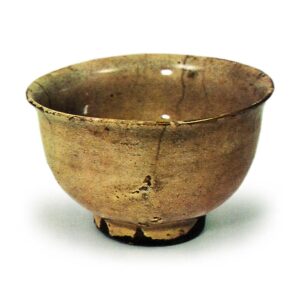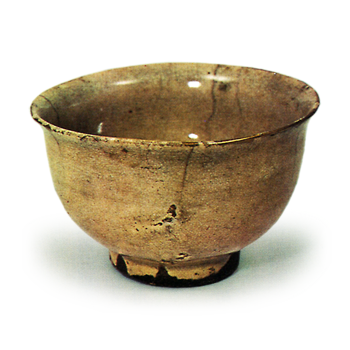
A type of Korai tea bowl. It is also called “Tomogae Hitomogae” or “Hitomogae Hitomogae”. It is called this because it is produced in Kumagawa, Gyeongsangnam-do, Korea. However, this is the name used in Japan, not in the home country where it is produced.
In the “Meibutsu Meibutsu Zuishiki” (A Collection of Tea Utensils), it is written, “Kumagawa has a reddish egg-colored clay glaze and a purple-colored splashed glaze, and it is very old. The old tea book says, “Makumagawa is the hand of Kakanto, and is probably large enough to enjoy the loquat color, and rarely small enough to be attractive. The clay is white, but reddish-purple clay is rare. Of the Kumagawa, the Shin and Oni handles are the oldest, and the Shin is elegant and gentle in both execution and scenery, while the Oni is of lower quality, but has more interesting scenery and is superior in terms of strength of execution. Sometimes it is difficult to distinguish between “true” and “oni,” but most of them can be distinguished at a glance.
Hamgyeong-do (pronounced “kanto”) is said to be a superior version of Kumagawa, with the latter glazed on the inside of the plateau in the post-walking stage and Kumagawa glazed on the inside of the plateau in the extremely smooth stage. Hamikantae (Hamgyeong-do, a Korean phonetic transcription of Hamgyeong-do) is also considered to be one of the Kumagawa, but it is somewhat different from the other Kumagawa. Egumakgawa is similar to hamikantae in that it is glazed with a gold-ki glaze on top of the glaze.



